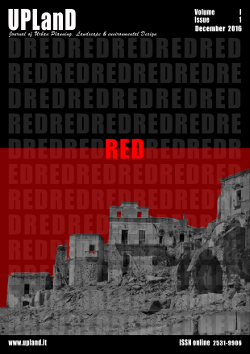Antropic origin of diffusion of phitopatogen agents. Some best practices to counter the fallout in economic-productive, social and cultural scope
Main Article Content
Abstract
Man has always tried to control nature and to take possession of its resources; at first he did it in a prudent way, taking care only of his maintenance, but then he did it in a wrong way because of the insistent requests of global market.
The upheaval of the old and respectful relationship between man and land has caused serious and irreparable consequences.
This article wants to analyze and to understand some causes of this break, and the effects of the diffusion of phitopathogen agents in agriculture: the Xylella fastidiosa bacteria in the vineyards of California before, and then in the olive groves in Puglia (Italy) the insect Dryocosmus Kuriphilus which has damaged the chestnut trees in Italy, the cedar apple rust, which attacked the apple trees in Virginia, the Moniliophthore roreri which attacked the cocoa production in Latin America.
The most important matter is that these threats and their effects are unforeseeable and they can’t be solved through isolated actions, but only with the integration of different strategies, using the instruments of the scientific research and the Knowledge, with a traditional planning.Downloads
Article Details

This work is licensed under a Creative Commons Attribution-NonCommercial-NoDerivatives 4.0 International License.
Authors who publish with this journal agree to the following terms:- Authors retain copyright and grant the journal right of first publication with the work simultaneously licensed under a Creative Commons Attribution License that allows others to share the work with an acknowledgement of the work's authorship and initial publication in this journal.
- Authors are able to enter into separate, additional contractual arrangements for the non-exclusive distribution of the journal's published version of the work (e.g., post it to an institutional repository or publish it in a book), with an acknowledgement of its initial publication in this journal.
- Authors are permitted and encouraged to post their work online (e.g., in institutional repositories or on their website) prior to and during the submission process, as it can lead to productive exchanges, as well as earlier and greater citation of published work (See The Effect of Open Access).
References
Altieri, G., Bianco, P. M., Bellucci, V., Floccia, F., Jacomini, C., Perrini, P., Tamburro, & R., Trinca, F. (2016), Xylella fastidiosa e olivo, Roma. From: https://www.academia.edu
Baumgartner, K., & Warren, G. J. (2005). Persistence of Xylella fastidiosa in Riparian Hosts Near Northern California Vineyards, United States Department of Agriculture–Agricultural Research Service, Davis, CA 95616.
Biehler, D. D., & Cronon, W. (2013). Pests in the city: Flies, Bedbugs, Cockroaches, and Rats. University of Washington Press.
Borgia, M. (2014, December 10). Sconfitto il nemico delle castagne. From http://www.spazifood.it
Bosio, G. (2015). Lotta biologica al cinipide galligeno del castagno: la situazione in Piemonte, in Quaderni della regione Piemonte, Agricoltura, 87, 40-44.
Davico, L., & Mela A. (2002). Le società urbane. Roma, IT: Carocci editore.
Farinelli, F. (2003). Geografia. Un’introduzione ai modelli del mondo. Torino, IT: Giulio Einaudi editore.
Fioravanti C. H., & Velho L. (2011). Fungos, fazendeiros e cientistas em luta contra a vassoura-de-bruxa, Sociologias, Porto Alegre, 27, 259-283.
Gaeta, L., Janin Rivolin, U., & Mazza, L. (2013). Lo Stato e la regolazione del suolo, in Governo del territorio e pianificazione spaziale . Torino, IT: CittàStudi Edizioni.
Graziosi, I., & Santi, F. (2008). Chestnut gall wasp (Dryocosmus kuriphilus): spreading in Italy and new records in Bologna province. Bulletin of Insectology, 61(2), 343-348.
Hill B. L., & Purcell A. H. (1995). Multiplication and movement of Xylella fastidiosa within grapevine and four other plants, University of California, Berkeley.
Hopkins, D. L., & Mid-Florida, R. E. C. (2014). Control strategies for Xylella fastidiosa. Proceedings of International Symposium on the European Outbreak of Xylella fastidiosa in Olive, Journal of Plant Pathology. Gallipoli, IT, October 21-22, 2014.
Laore, Agenzia Regionale per lo sviluppo in Agricoltura (2015). Relazione sulle attività svolte negli anni 2009-2015 nell’ambito della lotta biologica al Cinipide del castagno, Sorgono, IT.
Marziali, L., Marianelli, L., & Roversi, P. F. (2006). Il cinipide galligeno del castagno, Agenzia Regionale per lo Sviluppo e l’Innovazione nel settore Agricolo-forestale, Firenze, IT.
McHarg, I. (1969). Designi with nature, Doubleday & Company, New York. (Trad. it. Progettare con la natura, Padova, IT: Franco Muzzio editore, 1972).
Moriya, S., Inoue, K., Otake, A., Shiga, M., & Mabuchi, M. (1989). Decline of the chestnut gall wasp population, Dryocosmus kuriphilus YASUMATSU (Hymenoptera: Cynipidae) after the establishment of Torymus sinensis KAMIJO (Hymenoptera: Torymidae). Applied Entomology and Zoology, 24(2), 231-233.
Moussa, E. B., Mazzoni, V., Valentini, F., Yaseen, T., Lorusso, D., Speranza, S., Digiaro, M., Varvaro, M., Krugner, R., & D’Onghia, A. M. (2016, July 8). Seasonal Fluctuations of Sap-Feeding Insect Species Infected by Xylella fastidiosa in Apulian Olive Groves of Southern Italy. From http://jee.oxfordjournals.org
Pereira, J. L., Ram, A., Figueiredo, J. D., & Almeida, L. D. (1989). Primeira ocorrência de vassoura-de-bruxa na principal região produtora de cacau do Brasil. Agrotrópica, 1(1).
Purcell, A. H., & Saunders, S. R. (2005). Fate of Pierce’s Disease Strains of Xylella fastidiosa in Common Riparian Plants in California, Department of Environmental Science, Policy and Management, University of California, Berkeley 94720-3112.
Sepe, A. (2015, May 17). Vespa del Castagno, il cinipide galligeno. From http://www.tecnologia-ambiente.it
Teruo, H. (2006), Microrganismi effettivi. Benessere e rigenerazione nel rispetto della natura. Milano, IT: Tecniche Nuove editore.
Wells, J. M., Raju, B. C., Hung, H. Y., Weisburg, W. G., Parl, L. M. & Beemer, D. (1987). Xylella fastidiosa gen. nov., sp. nov.: Gram-negative, xylem-limited, fastidious plant bacteria related to Xanthomonas spp, in International Journal of Systematic Bacteriology, 37(2), 136–143.
Wistrom, C., & Purcell, A. H. (2005). The Fate of Xylella fastidiosa in Vineyard Weeds and Other Alternate Hosts in California, Department of Environmental Science, Policy and Management, University of California, Berkeley 94720-3114.

